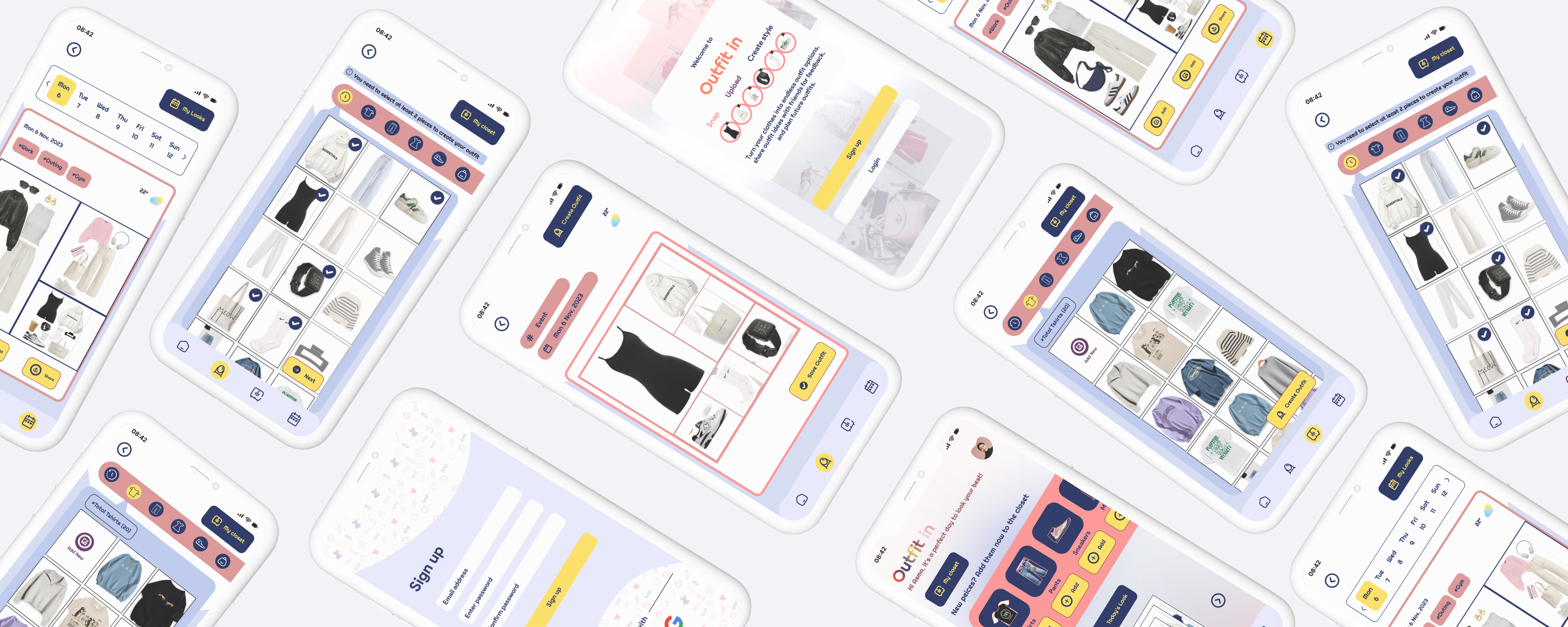
Outfit In - A wardrobe app
| Time Line | |
|---|---|
| Role | Product Designer |
| Tags | IOS AppMobile appUI/UX |
| Tools | FigJamFigmaNotion |
At-a-Glance 👀
Outfit In is a wardrobe app that helps users organize their clothes by uploading photos, making it easy to create and plan outfits based on the daily calendar and weather. The app allows categorization of clothing items, sharing outfit ideas with friends for feedback, and planning future outfits.
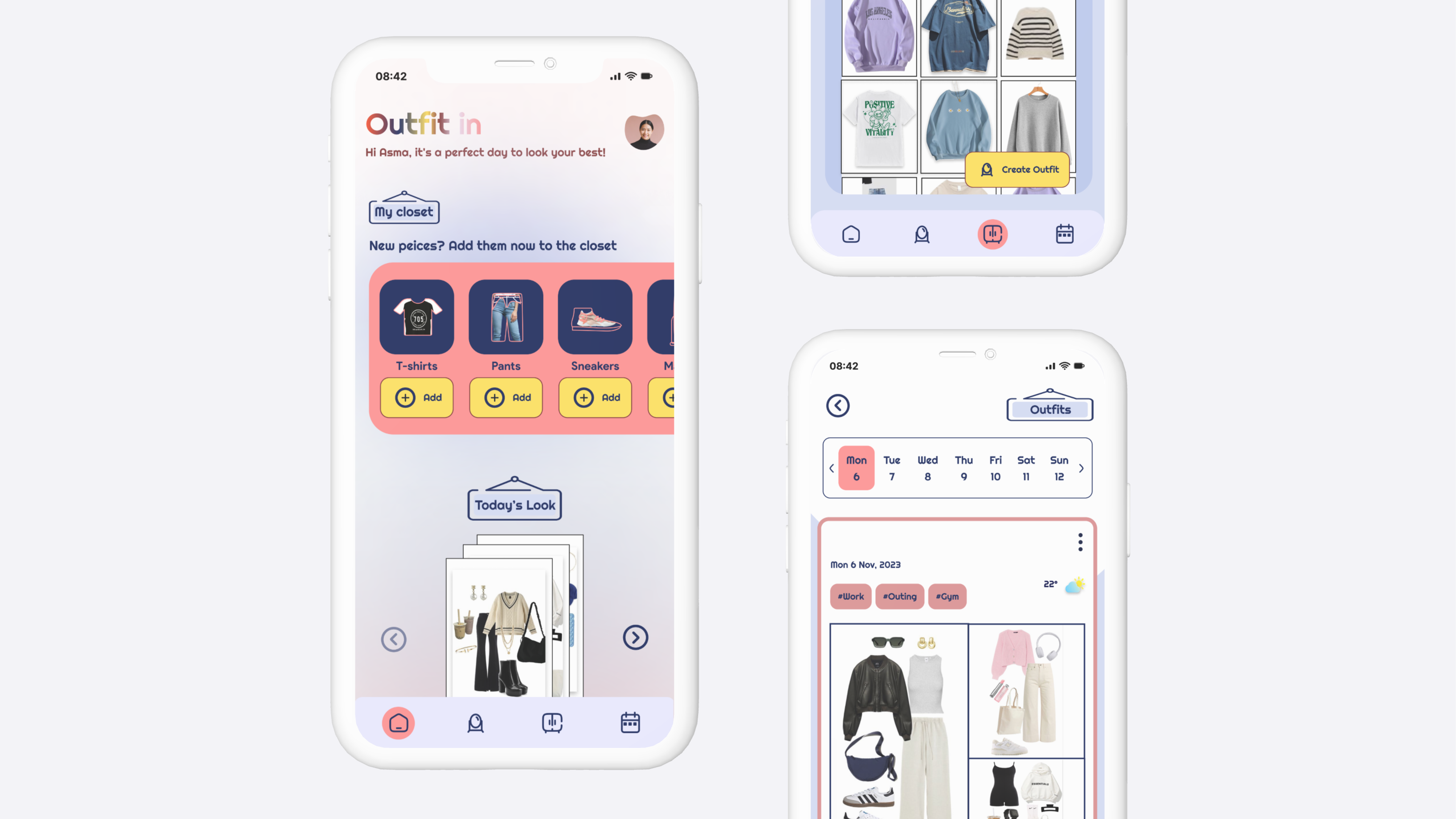
The Challenge
The main challenge is to help users organize their unorganized wardrobes by allowing them to quickly photograph their clothes and use these photos to create various outfits based on location and weather.
Based on that, I have created a "Feature Prioritization”
| Priority | Task Description | Notes |
|---|---|---|
| High | Record and organize wardrobe items by uploading photos of favorite pieces. | Fundamental feature for creating a digital wardrobe. |
| High | Create outfits using uploaded wardrobe photos. | Core functionality for outfit planning and coordination. |
| High | Check daily calendar for outfit planning based on date and weather. | Essential for personalized outfit recommendations. |
| Medium | Categorize wardrobe pieces into sections like pants, blouses, dresses, t-shirts. | Improves organization and ease of access to wardrobe items. |
| Medium | Review today's outfits and plan for future days. | Enhances planning and maximizes wardrobe utilization. |
| Low | Seek feedback from friends by sharing outfit photos. | Adds social interaction and community engagement. |
This prioritization ensures that the fundamental features necessary for the core functionality of the app are developed first, while additional features that enhance the user experience are addressed subsequently.

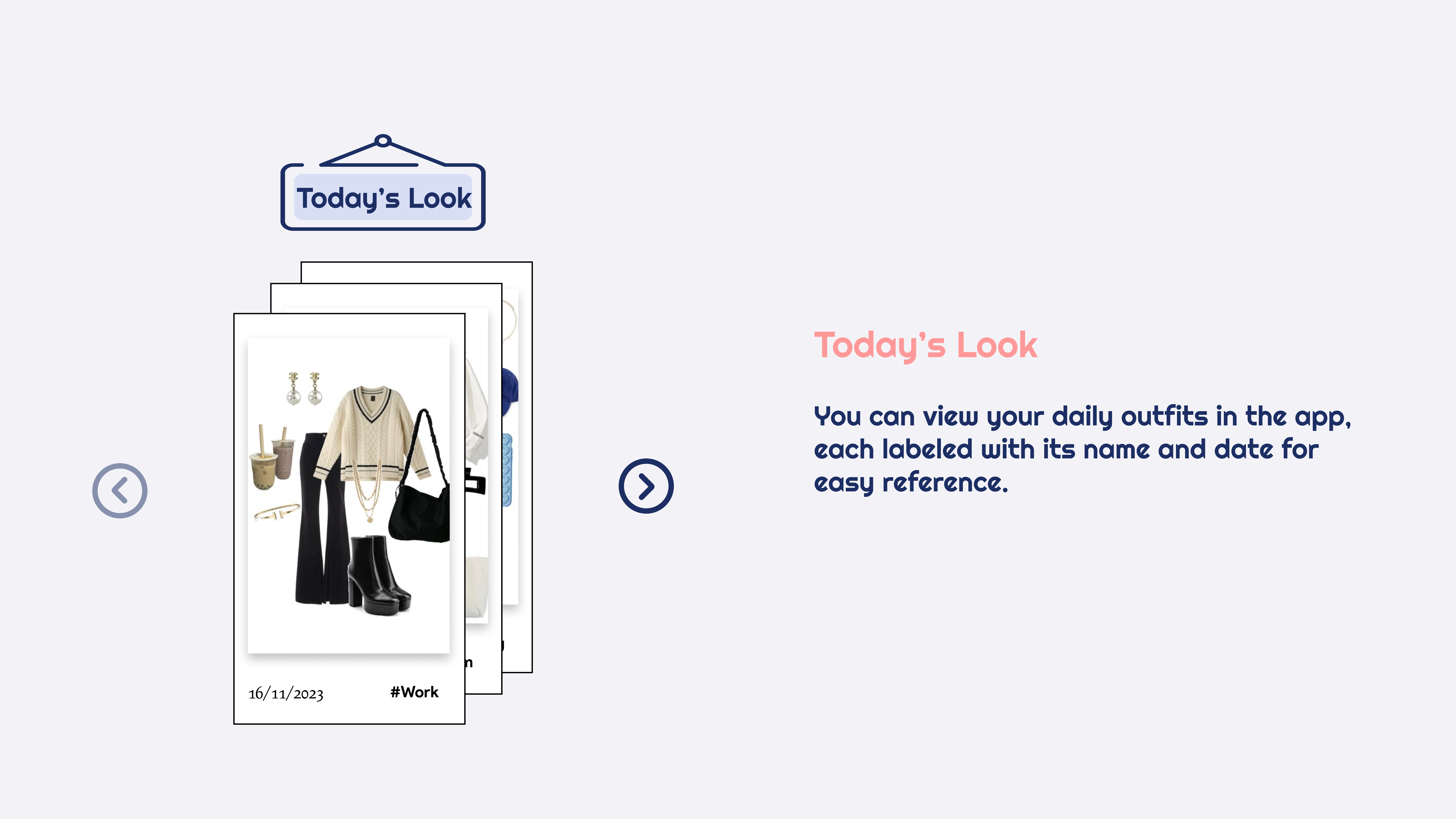
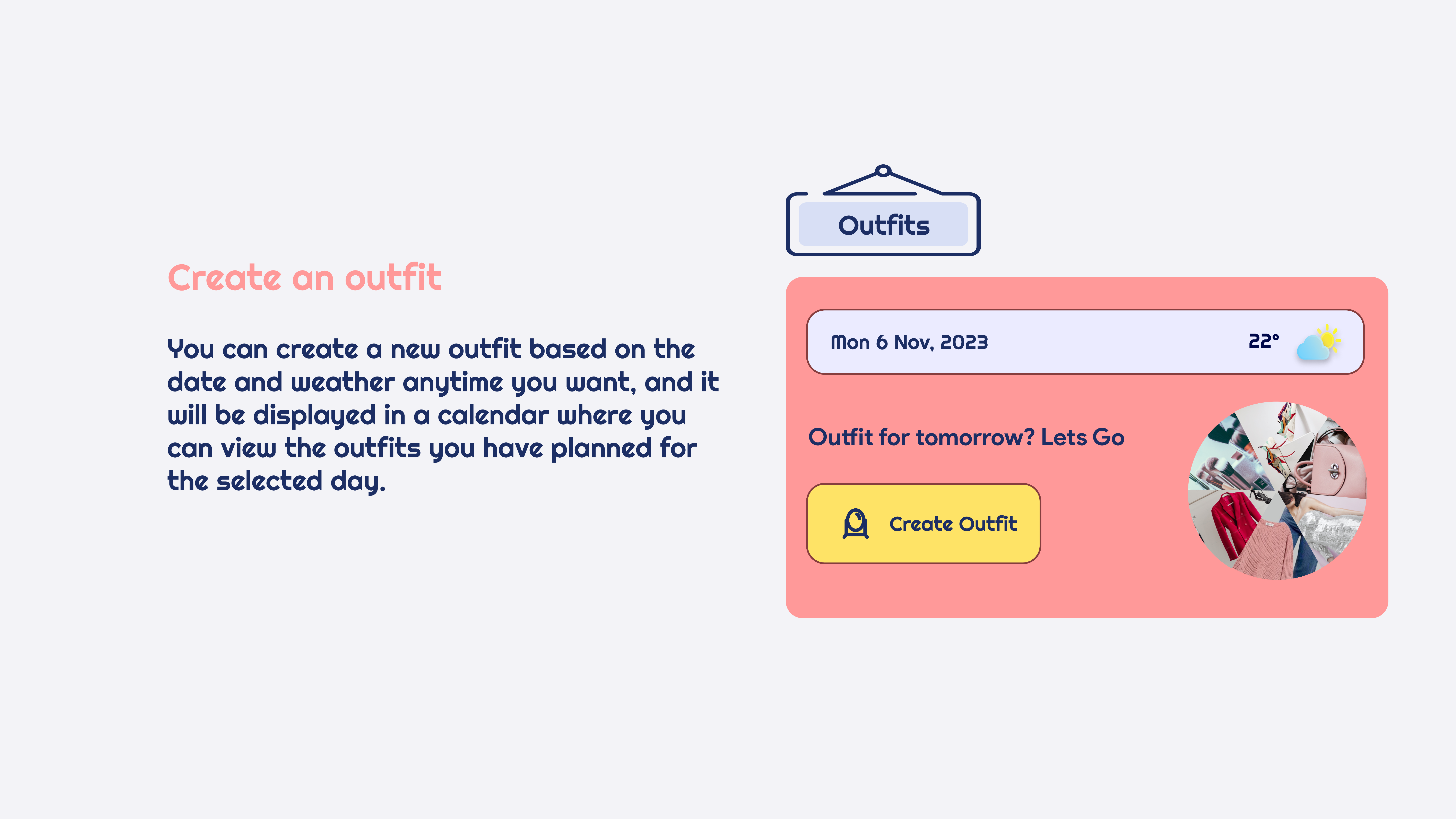

The Solution
Outfit In offers a comprehensive solution to streamline wardrobe management and outfit planning. By allowing users to easily upload photos of their clothing items, the app organizes these items into categories like pants, blouses, dresses, and t-shirts. Users can create outfits using these uploaded photos and plan their daily looks based on date and weather conditions through an integrated calendar feature. Additionally, the app enables users to share their outfits with friends to get feedback, ensuring they feel confident in their choices.
The Process
Mind Map
I created a mind map for this app that highlights the key focus areas for the design. The Outfit In app revolves around seamlessly integrating wardrobe management with modern convenience. Users can efficiently organize their clothing items in a digital storage, categorize them for quick access, and create stylish outfits tailored to daily looks and weather conditions.
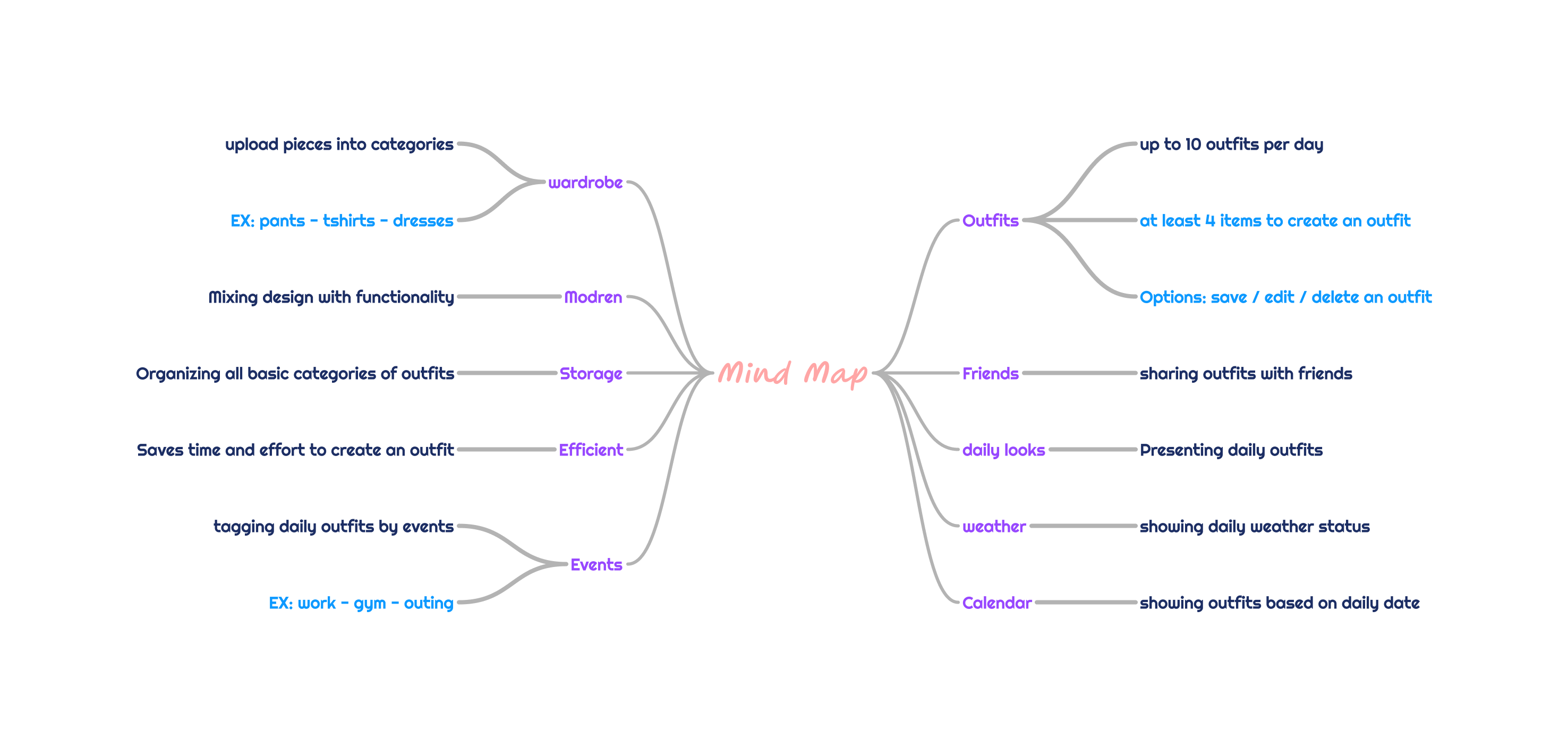
The app's calendar feature allows for proactive planning, syncing outfits with upcoming events and weather forecasts. Social elements enable users to share outfit ideas with friends for feedback, fostering a collaborative fashion community. Outfit In empowers users to stay organized, stylish, and prepared for any occasion with minimal effort.
This comprehensive mind map ensures that all critical aspects are considered in the design process, creating a cohesive and engaging app.
User Flow

The user starts with the initial intro screens, where they can either sign up or log in. After logging in, they are directed to the homepage, where they can upload new pieces of clothing. The user then selects a category for the uploaded piece and has the option to remove the background or rotate the image. Once the piece is saved, the user can choose to return to the homepage or create a new outfit. If they opt to create a new outfit, they select at least four items from their wardrobe and add details such as the event and date before saving the outfit. The user can then access the calendar to check outfits, with the ability to add, edit, or share outfits directly from the calendar view.
Competitors Analysis
In conducting a competitor analysis between outfits apps like Cladwell and Pureple, several key features and functionalities emerge that define each app's approach to wardrobe management and outfit planning.
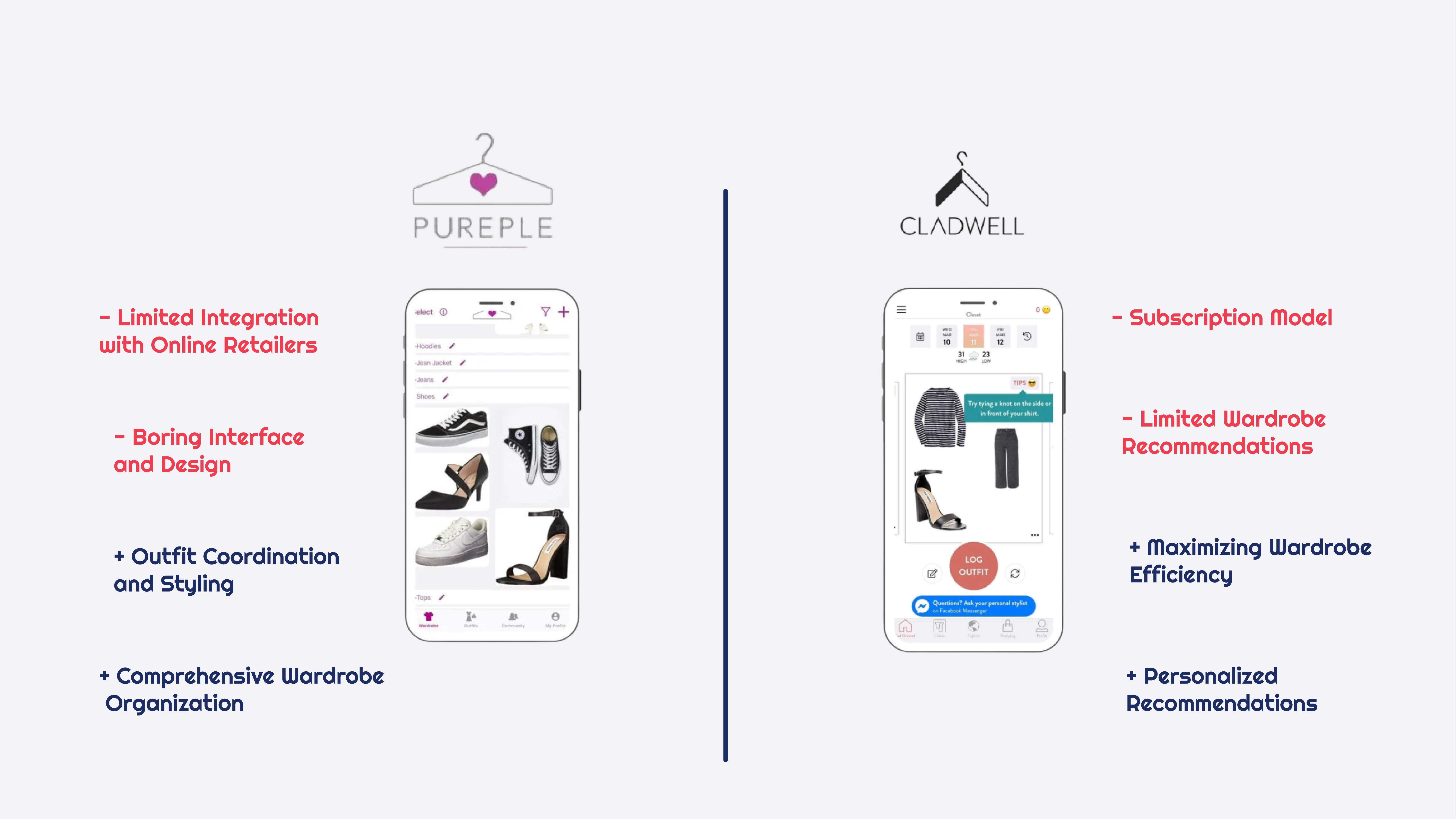
Pureple is a virtual wardrobe and outfit planning app designed to help users organize their clothing items and create stylish outfits. Its strengths include comprehensive wardrobe organization, allowing users to upload and categorize their clothing items by type, color, and season, and its outfit coordination feature, which suggests outfit combinations based on users' existing wardrobe pieces. However, Pureple has some weaknesses, such as limited integration with online retailers, which may impact its utility for users who frequently update their wardrobe online, and its user interface, which some users may find less intuitive or visually appealing compared to other similar apps.
Cladwell is an app designed to help users curate their wardrobe and make more sustainable fashion choices. Two strengths of Cladwell are its focus on sustainable fashion, encouraging users to maximize the use of existing wardrobe items to reduce waste, and its personalized recommendations, which offer outfit suggestions based on users' wardrobe, style preferences, and local weather. However, the app has some weaknesses, including limited wardrobe analysis, as its recommendations depend on the accuracy of user-inputted data, and its subscription model, which may deter users due to ongoing costs compared to free or one-time purchase alternatives.
By understanding the core functionalities of these competitors, we can identify opportunities to enhance a app, focusing on areas such as personalization, wardrobe organization, and user engagement.
Mood Board
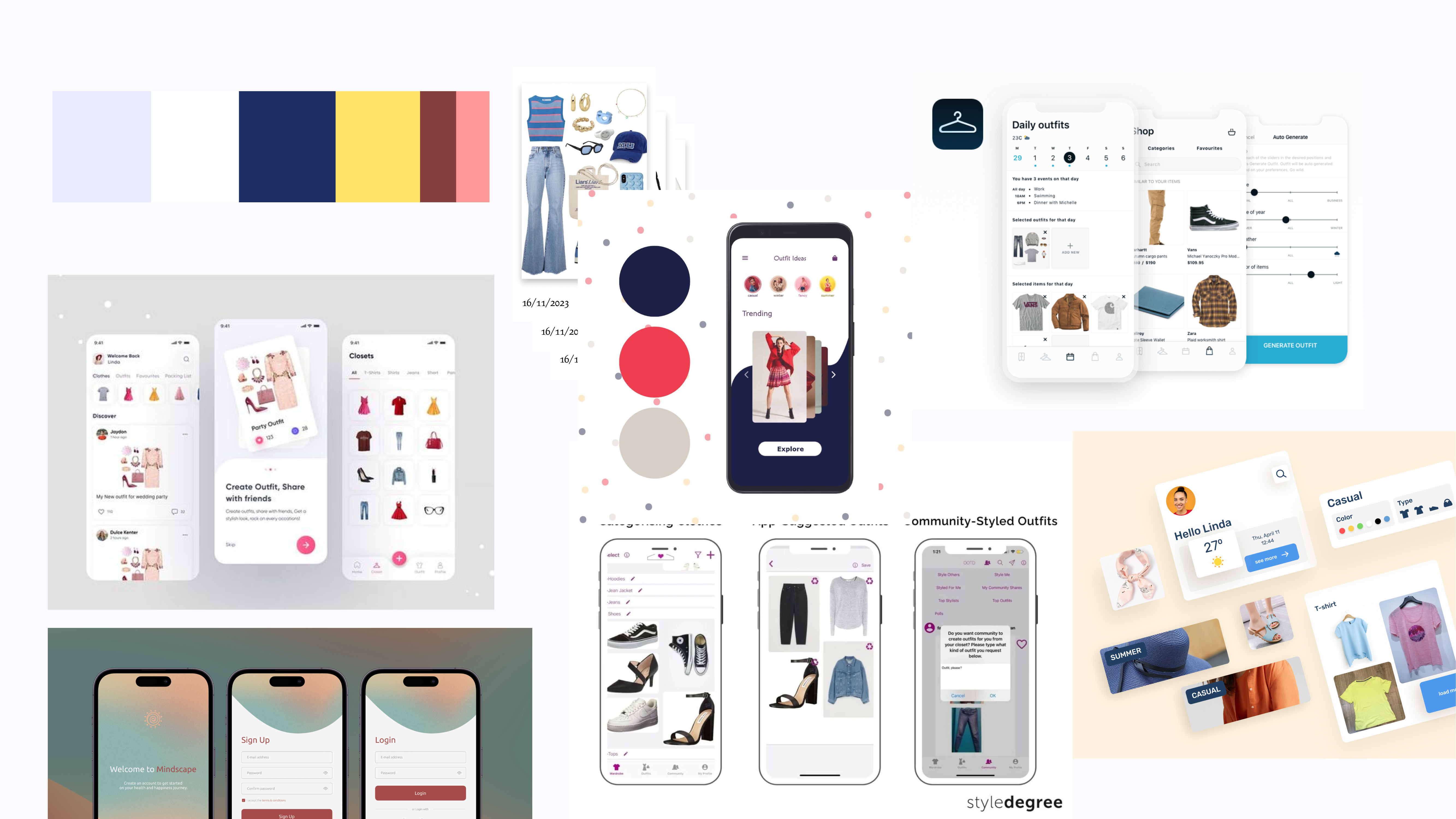
I have created a mood board for Outfit In, incorporating screens from other apps, a color palette, a slideshow, and various outfit looks. The mood board showcases a sleek and modern design, combining visual elements from similar apps to highlight best practices in user interface and user experience design. The chosen color palette reflects the app's stylish and organized aesthetic, with a balance of neutral tones and vibrant accents to enhance visual appeal. The slideshow demonstrates the app's functionality, including seamless photo uploads, outfit creation, and calendar integration.
Wireframes & Prototypes →
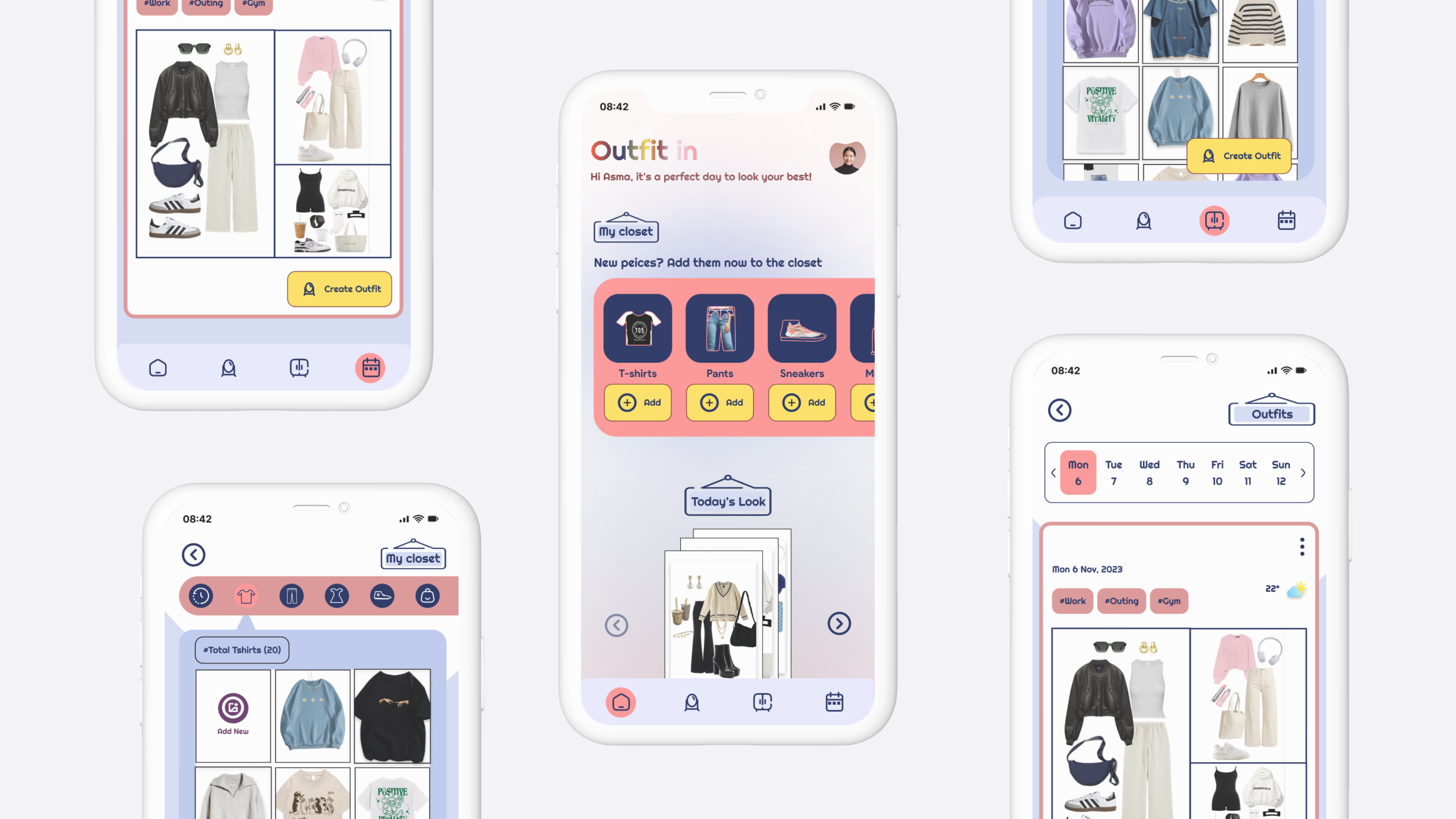
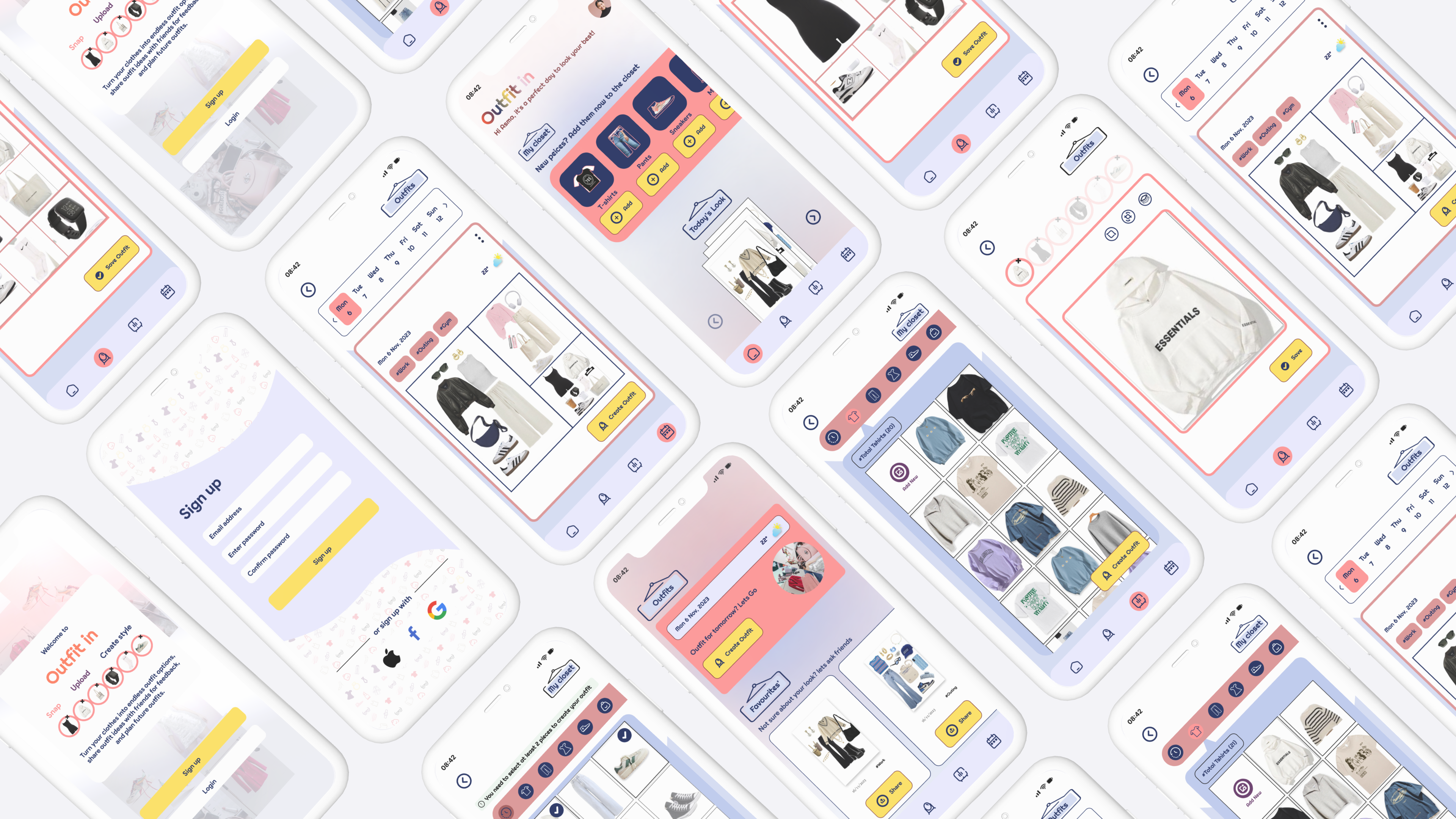
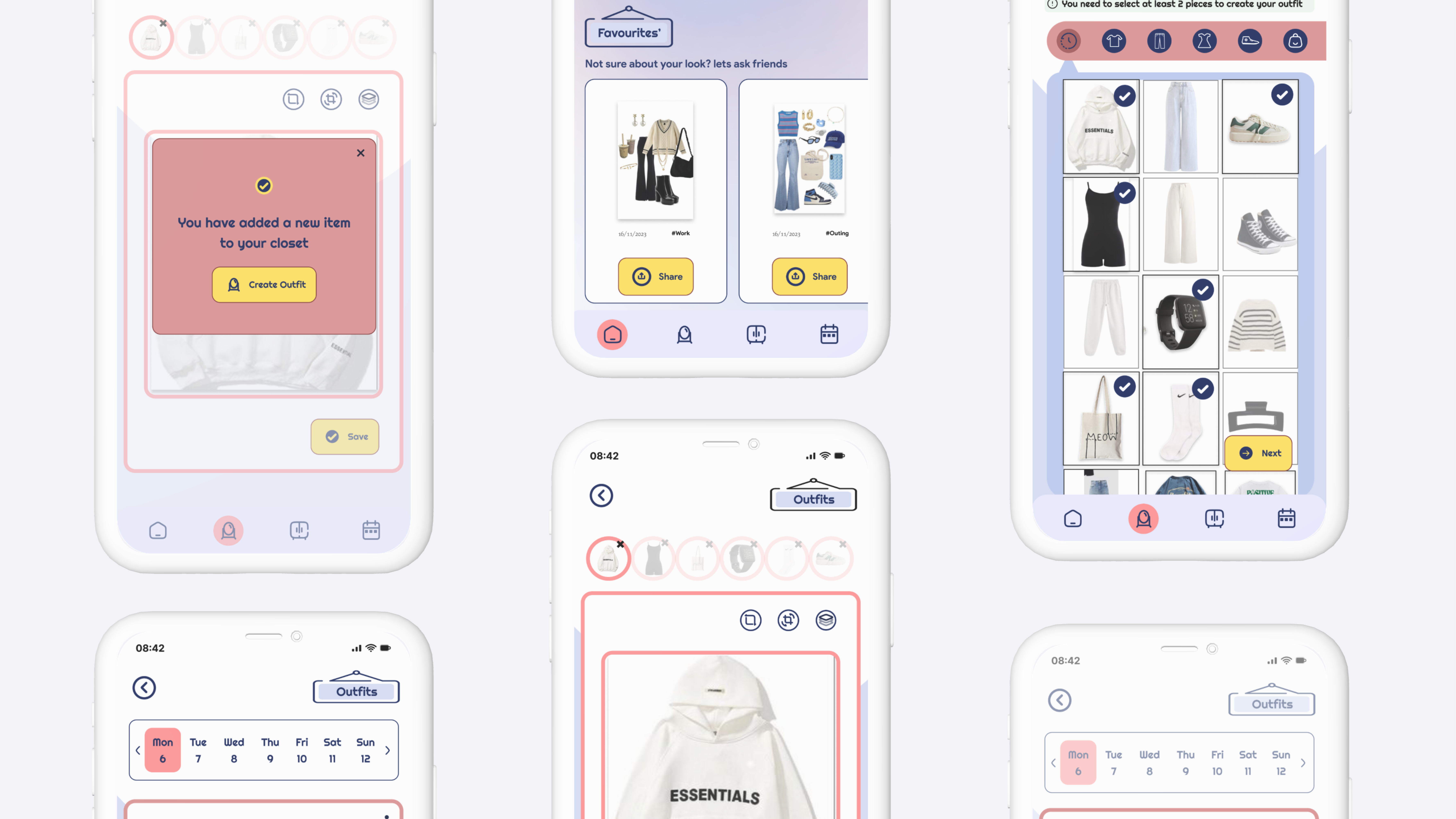
Lessons from Outfit In app
- User-Centric Design is Crucial: Understanding user needs and preferences is essential for creating an intuitive and useful app. User feedback throughout the design process can significantly enhance the final product.
- Simplicity is Key: Keeping the interface clean and straightforward helps users navigate the app effortlessly, making the experience enjoyable.
- Personalization Enhances User Engagement: Offering personalized outfit suggestions based on weather and user preferences increases user satisfaction and engagement.
- Social Features Add Value: Integrating social sharing options allows users to seek feedback and engage with friends, adding a valuable community aspect to the app.
- Scalability Matters: Designing the app to be scalable from the start is important to accommodate a growing user base without compromising performance.
What is next for Outfit In app?
- Launch and Marketing: Deploy the app to app stores and implement a comprehensive marketing strategy to attract users, including social media campaigns, influencer partnerships, and targeted advertisements.
- User Feedback and Iteration: Collect and analyze user feedback post-launch to identify pain points and areas for improvement. Release regular updates to address these issues and enhance the user experience.
- Enhanced Features: Develop and integrate advanced features such as AI-driven style recommendations, outfit matching for specific events, and more detailed weather-based suggestions.
- Expand Social Integration: Enhance social features by adding community elements such as outfit inspiration boards, user-generated content, and direct messaging for fashion advice.
- Cross-Platform Development: Ensure the app is available and fully functional on multiple platforms, including iOS, Android, and web.
- Data Analytics: Implement robust data analytics to gain insights into user behavior, popular features, and usage patterns to inform future development.
